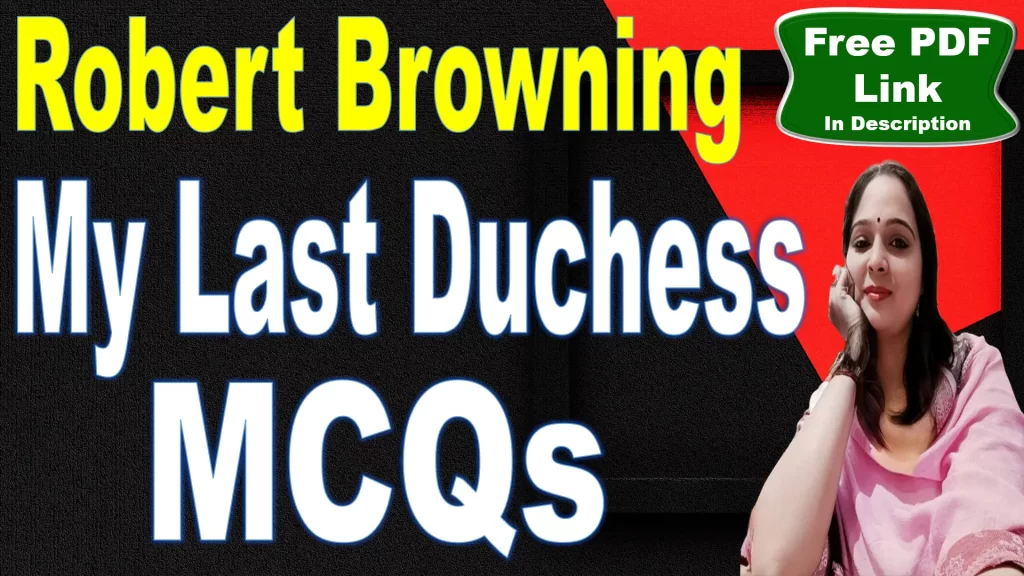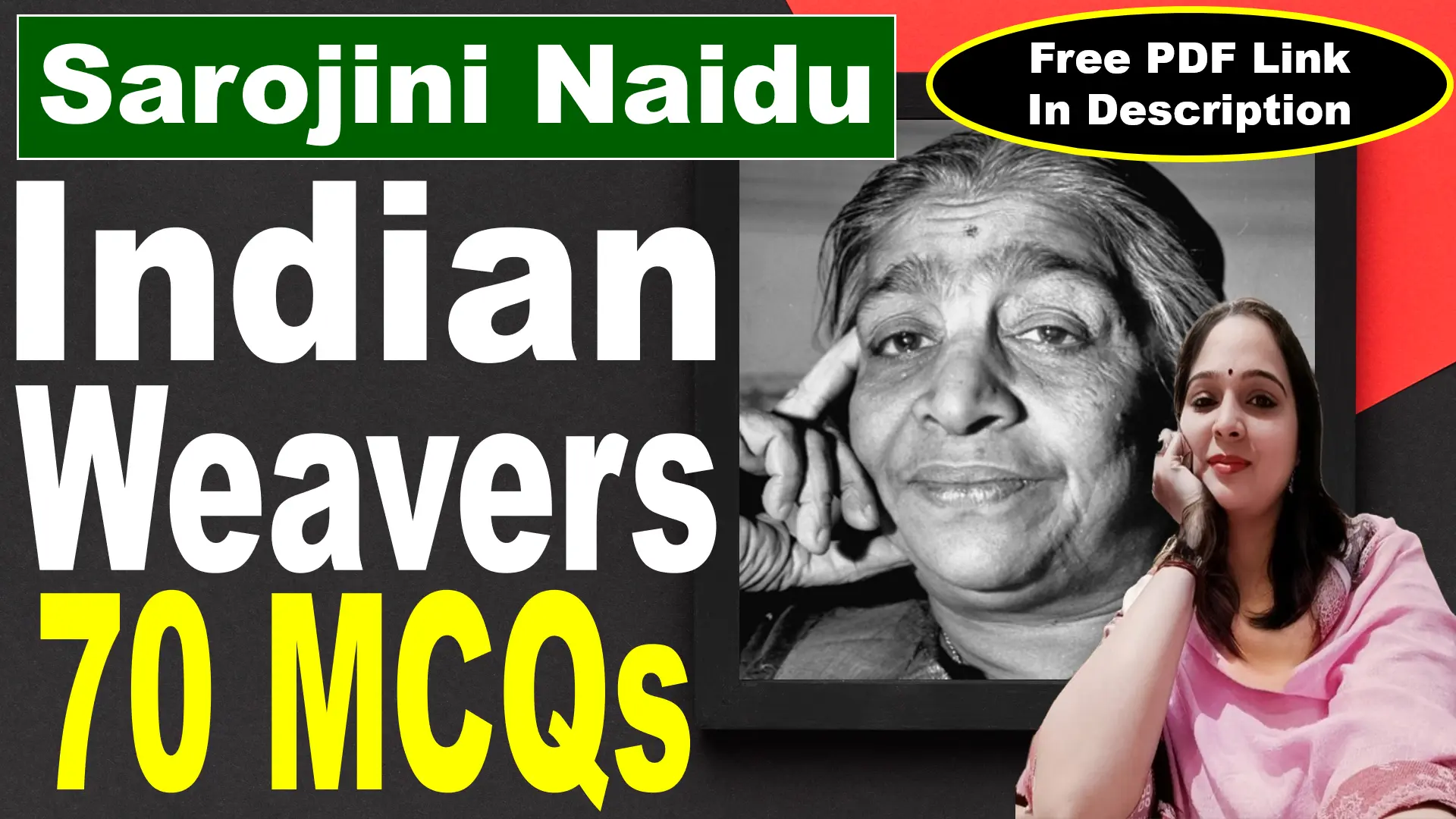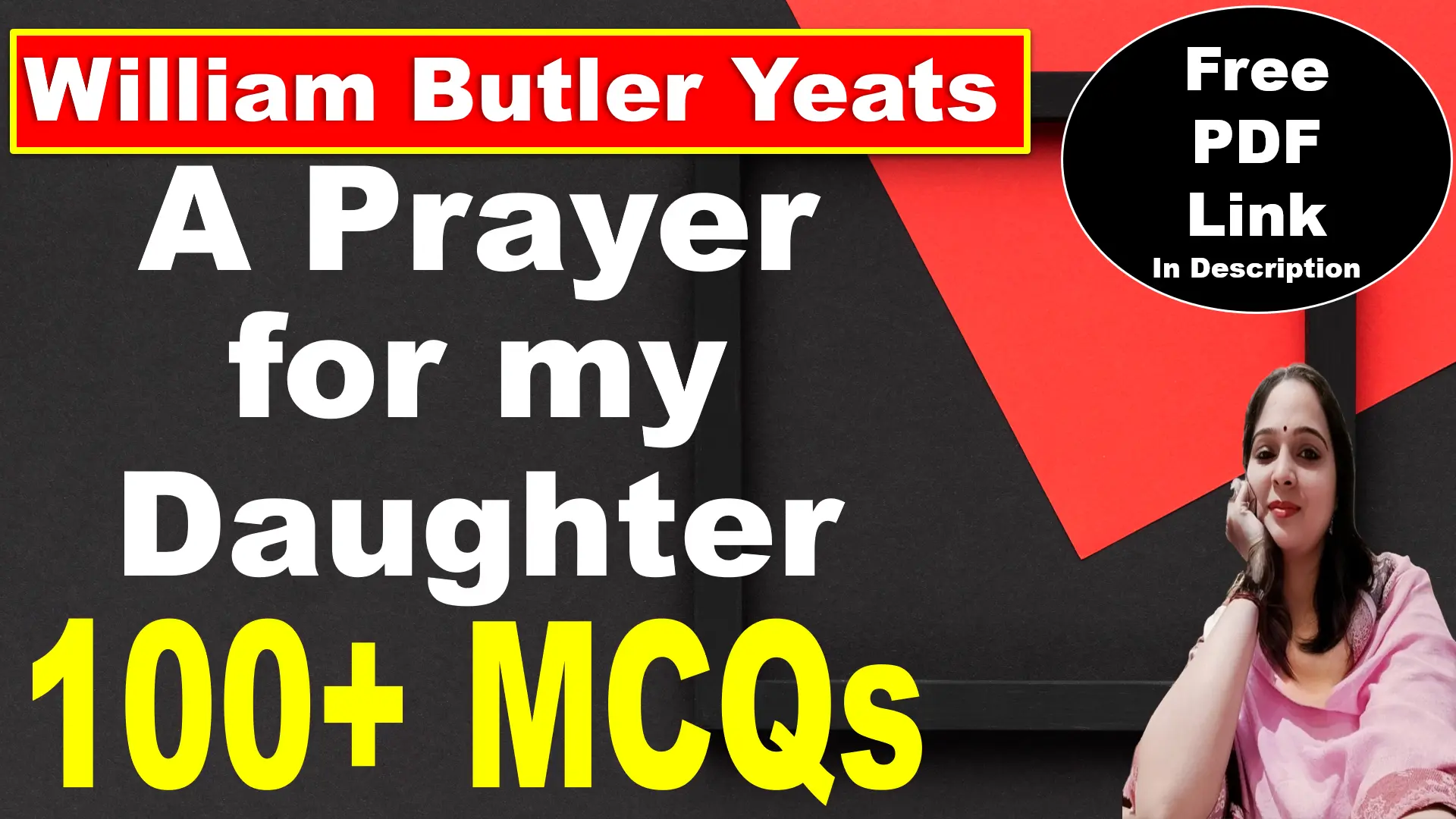
11. Which line reflects the Duke’s pride in his heritage?
A. “That’s my last Duchess painted on the wall”
B. “My gift of a nine-hundred-years-old name”
C. “Will’t please you sit and look at her?”
D. “Then all smiles stopped together”
Answer: B. “My gift of a nine-hundred-years-old name”
Explanation: This line reflects the Duke’s immense pride in his aristocratic lineage. He refers to his “nine-hundred-years-old name” as a “gift” to the Duchess, expecting her to appreciate the honor of being married to someone with such a long and noble family history. This shows how deeply the Duke values his status and heritage, seeing it as his most important attribute, which contributes to his sense of entitlement and superiority.
12. What does the mention of Neptune taming a sea-horse symbolize?
A. The Duke’s appreciation for art
B. His desire for dominance and control
C. His wealth and status
D. All of the above
Answer: D. All of the above
Explanation: The mention of Neptune taming a sea-horse symbolizes multiple aspects of the Duke’s personality. It represents his desire for dominance and control, as Neptune’s act of taming reflects the Duke’s attitude toward his wife and others. It also underscores his wealth and status, as the statue of Neptune is an artistic display of power, much like the Duke’s treatment of the Duchess. Additionally, the mention of art ties into the Duke’s appreciation for fine things and the way he controls the portrayal of his world.
13. What poetic device is used in “Looking as if she were alive”?
A. Metaphor
B. Imagery
C. Alliteration
D. Simile
Answer: D. Simile
Explanation: The line “Looking as if she were alive” uses a simile to compare the Duchess’s portrait to a living being. The simile emphasizes the artist’s skill and the lifelike quality of the painting. However, it also highlights the Duke’s ongoing obsession with her, as even in death, he still wants to control her image and ensure it remains perfect, just as she was in life.
14. The line “I choose never to stoop” suggests the Duke’s:
A. Humility
B. Arrogance
C. Generosity
D. Indifference
Answer: B. Arrogance
Explanation: The Duke’s refusal to “stoop” indicates his arrogance and pride. He refuses to engage in humble actions or explanations, considering them beneath him. His statement shows that he feels superior to the Duchess and, by extension, to others. The Duke expects to be revered and to remain above reproach, never lowering himself to correct or teach the Duchess in a way that would diminish his perceived status.
15. Why is My Last Duchess considered a dramatic monologue?
A. It is a conversation between two characters.
B. The Duke speaks his thoughts aloud to an implied listener.
C. It focuses on the Duchess’s perspective.
D. It is written in dialogue form.
Answer: B. The Duke speaks his thoughts aloud to an implied listener.
Explanation: The poem is considered a dramatic monologue because it features a single speaker—the Duke—who speaks his thoughts and feelings aloud to an implied listener, the emissary of the Count. The Duke unintentionally reveals his character, his possessive and controlling nature, as he describes his late wife, the Duchess. This form allows the reader to gain insight into the Duke’s psyche while maintaining the illusion of a conversation.
16. How does the Duke justify his actions against the Duchess?
A. By claiming she was unfaithful
B. By saying she failed to value his status
C. By pointing out her lack of beauty
D. By accusing her of stealing
Answer: B. By saying she failed to value his status
Explanation: The Duke justifies his actions by claiming that the Duchess did not show sufficient appreciation for his noble status. He criticizes her for being easily pleased by simple things and sharing her smiles and warmth indiscriminately with others. In his eyes, this behavior was a sign of disrespect, and he believed she should have reserved her affections exclusively for him. His desire for control is evident in his explanation of why he felt compelled to take drastic action.
17. The Duke’s character can best be described as:
A. Compassionate and kind
B. Egotistical and controlling
C. Romantic and loving
D. Reserved and shy
Answer: B. Egotistical and controlling
Explanation: The Duke’s character is best described as egotistical and controlling. He exhibits a sense of superiority, believing that his noble lineage entitles him to absolute control over others, particularly his wife. His possessiveness and jealousy drive him to extreme actions, reflecting his need to dominate every aspect of the Duchess’s life and even her memory after her death.
18. The Duke’s reference to the Count’s “munificence” relates to:
A. The dowry he expects from the Count
B. The Count’s artistic skills
C. The Count’s generosity toward the Duchess
D. The Count’s admiration for the Duke
Answer: A. The dowry he expects from the Count
Explanation: The Duke’s reference to the Count’s “munificence” is a subtle comment on the dowry he expects in the marriage arrangement with the Count’s daughter. By using the term “munificence,” the Duke implies that the Count’s generosity, particularly in terms of wealth, is an important factor in the potential marriage, highlighting the Duke’s transactional view of relationships.
19. What does the Duke value most in his relationships?
A. Emotional connection
B. Obedience and exclusivity
C. Shared happiness
D. Individuality and freedom
Answer: B. Obedience and exclusivity
Explanation: The Duke values obedience and exclusivity above all in his relationships. He expects those around him, particularly his wives, to give him undivided attention and reverence. The Duchess’s failure to reserve her joy and affection exclusively for him is one of the primary reasons for his discontent and his subsequent actions. His need for control and dominance is central to his view of relationships, making him believe that loyalty and subservience are paramount.
20. What is the structure of My Last Duchess?
A. Blank verse
B. Rhymed couplets
C. Free verse
D. Quatrains
Answer: B. Rhymed couplets
Explanation: My Last Duchess is written in rhymed couplets, a formal structure that enhances the Duke’s polished and controlled demeanor. The use of rhymed couplets contributes to the smooth, controlled flow of the Duke’s speech, reflecting his obsessive need for order and structure. It also mirrors the idea of control, as the Duke articulates his thoughts in a carefully structured way, even as his inner turmoil and possessiveness emerge through his words.






Very interesting topic, regards for posting.